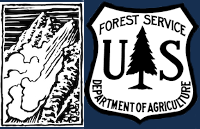Snowpack and Avalanche Discussion
<p>Very dangerous avalanche conditions exist in the mountains of Island Park, West Yellowstone and Cooke City. Natural and human-triggered avalanches are likely. Avoid slopes steeper than 30 degrees and lower-angle terrain in the runout zones of avalanche paths.</p>
<p>Slides will fail within the new and wind-drifted snow as <strong>wind slab </strong><span>and</span><strong> storm slab avalanches. </strong>Since Thursday, the mountains in Island Park have received 40” of snow, equal to 4.1” <a href="https://avalanche.org/avalanche-encyclopedia/#snow-water-equivalent-swe… water equivalent (SWE)</span></a>. During the same period, the Lionhead area received 30” of snow and Cooke City received 24” of snow. Yesterday, hurricane-force gusts up to 100 mph transported snow into unstable slabs at all elevations (the strongest gusts were recorded on Lionhead Ridge).</p>
<p>In the Lionhead area, <strong>persistent slab avalanches </strong>breaking 3-5 feet deep on the weak snow buried in late January are possible. Slides on buried weak layers tapered off a couple of weeks ago, but heavy loading from recent snow could wake these layers up, resulting in large avalanches failing deep within the snowpack.</p>
<p>The specifics of weak layers and types of avalanches are irrelevant today. All can be large enough to injure or kill riders and skiers. Avoidance is critical.</p>
<p><span>The avalanche danger is HIGH on all slopes.<span> </span></span></p>
<p>Dangerous avalanche conditions exist in the Bridger, Southern Madison and Southern Gallatin Ranges, where 20-24” of snow has fallen since Thursday, and strong winds built unstable slabs of drifted snow. Human-triggered <strong>wind slab avalanches</strong> breaking 2-3 feet deep are likely. Yesterday, Alex and I avoided the steep terrain in Tepee Basin, where we measured two feet of recent snow and saw failures within and below the new snow (<a href="https://www.youtube.com/watch?v=VpFFY3Gug0w"><strong><span>video</span>…;). A warming trend yesterday is likely to result in increased instability within layers of the storm snow and <strong>storm slab avalanches</strong>.</p>
<p><strong>Persistent slab avalanches</strong> breaking 3-5 feet deep on the weak snow buried in late January are possible in the Southern Gallatin and Southern Madison Ranges. On Friday, a snowmobiler triggered a 2-3 foot deep hard slab on a steep slope with a relatively shallow snowpack in the Taylor Fork (<a href="https://www.mtavalanche.com/node/34610"><strong><span>video, photo and obs</span></strong></a>). With the heavy loading from recent snow, we could see an increase in larger avalanches.</p>
<p><span>To enjoy a safe day in the mountains, cautious route-finding that largely avoids steep slopes and runout zones is essential. The avalanche danger is CONSIDERABLE on all slopes.<span> </span></span></p>
<p>Since Thursday, the Northern Madison and Northern Gallatin Ranges have received 11-19” of snow (0.8-1.1” SWE). Strong winds scoured some slopes and loaded others, where <strong>wind slab avalanches </strong>breaking 1-2 feet deep are the primary concern. Yesterday, Mark and his partner triggered small drifts on test slopes (<a href="https://www.mtavalanche.com/node/34624"><strong><span>photos and details</span></strong></a>). Seek out slopes sheltered from the wind for better snow and safer avalanche conditions.</p>
<p>On non-wind-loaded slopes, <strong>loose snow avalanches</strong> are possible. While relatively harmless in open terrain, they can be dangerous above cliffs, rocks, or trees.</p>
<p><span>Identify and avoid unstable wind-loaded terrain by watching for a textured or pillowy snow surface, cracking or a stiffening of the snow surface. The avalanche danger is MODERATE. </span></p>
